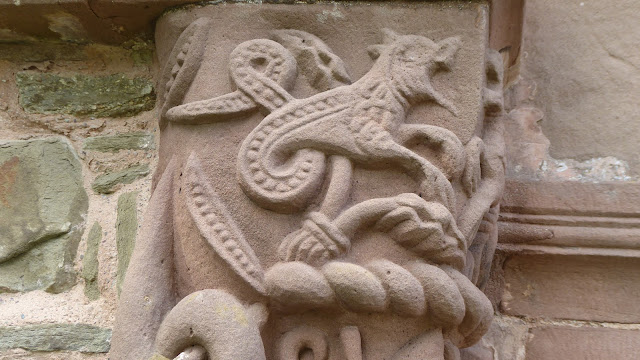Well, that was a wild and windy - and WET - night, for sure. I know our river will be well up today, and I shall go and check how bad it is once it's light. Yet it didn't stop the annual night-time rally, although fortunately their route wasn't past our front gate as it is sometimes. I could hear them somewhere in the valley about 1.30 a.m. onwards. Just as well their route wasn't along the valley bottom or they may have charged into the flood on that bottom lane. Here's the river as you first see it coming down our hill:
Yesterday we had a bit of light relief when a cow wandered past our kitchen window. Of course, she was not meant to be there and I have yet to discover where she got in (possibly along the stream as there is a "hanging" fence there.) Anyway, we had to don boots, open the front gate and gently chivy her out and into next door's yard. (Just discovered the calving heifers are back in our top field so this must have been one of them and in which case, I know where she came through and will have to ask Next Door to mend the fence.
Anyway, back to Kilpeck and the many and wonderful corbels. All quotes are from Malcolm Thurlby's book:
"This corbel is a humanoid lion's head with a mane and curly cap of hair between the damaged ears on top of the head. The wide mouth derives from the classical theatrical mask".
The familiar Agnus Dei - the Lamb of God.
A ram's head. There are three corbels denoting this around the church. The rams signify the Apostles or the princes of the Church.
A rather foxy-looking carving, next to a flower which has its equivalent at Aulnay-de-Sainatoigne, Western France. The flowercorbel : 'As for man, his days are as grass: as a flower of the field, so he flourisheth. . .' (Psalm 103).
'A bland, earless frog-like head with a large swollen tongue or other object in its mouth.'
Don't scroll down if you are easily offended, as a Sheela-na-Gig comes next . . .
Oh dear! This carving represented "low morals" - I can't think why!!!
Here is a pig with a damaged snout/mouth. 'The pig (porcus) is a filthy beast (spurcus); it sucks up filth, wallows in mud, and smears itself with slime . . . Sows signify sinners, the unclean and heretics. The sow thinks on carnal things . . .'
The fiddle player also represents low morals (!) whilst the pair of figures on the next corbal are dancing (or perhaps wrestling?) - another nod to low morals.
A muzzled bear with two human heads poking out of its mouth.
'A grotesque head with flared lips', 'a simple plain beak head biting a human face.' Intertwined serpents and another ram's head.
A horse's head, 'bird with back-turned head and crescent-shaped wing', and a stag running up the corbel.
Finally (thank heavens, can I hear you saying?) a dog or wolf being pounced on by a Beast of some description, which wasn't a corbel but up near one of the windows.
If you get the chance, do visit Kilpeck - it is really something else when it comes to church architecture.





















































